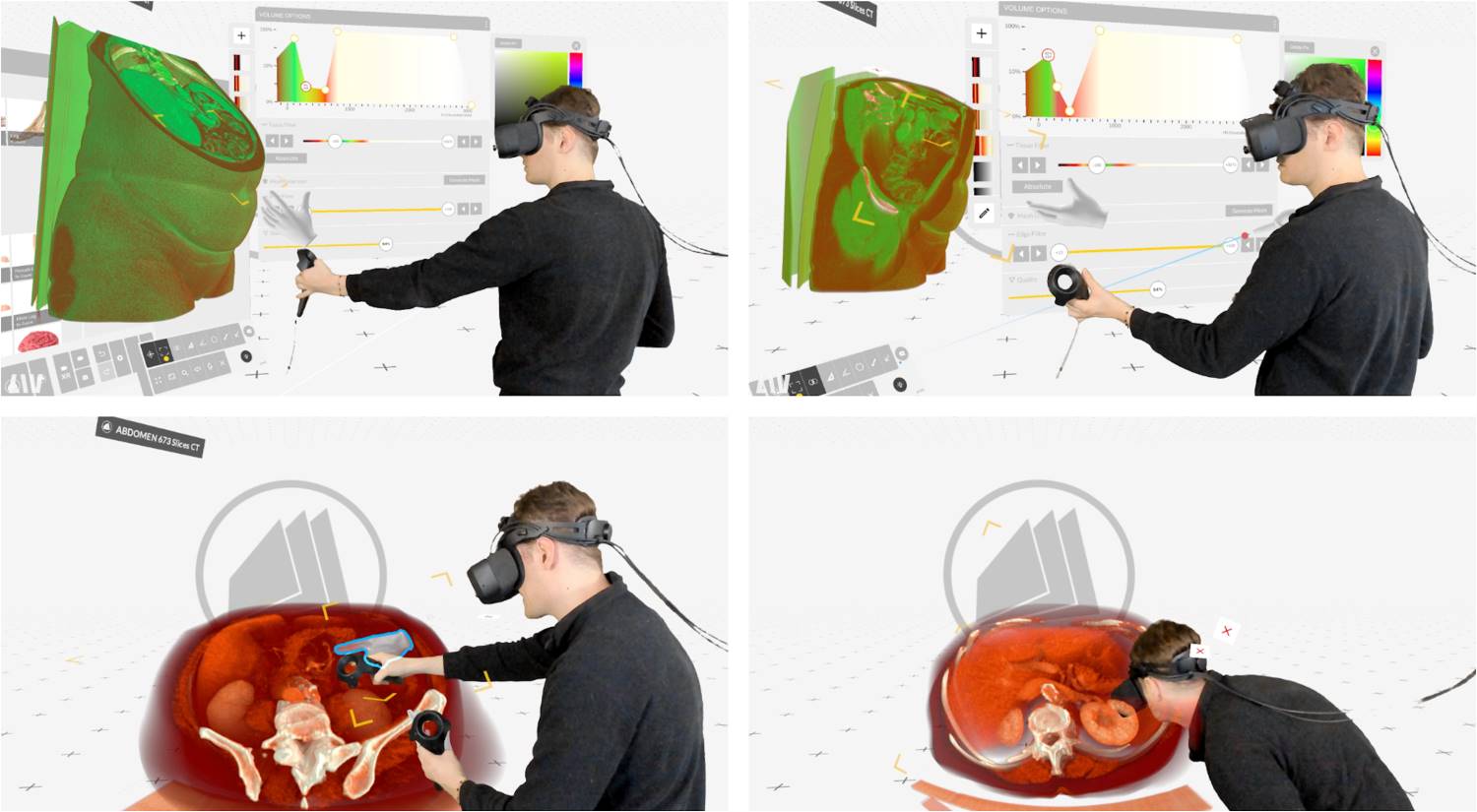
Moritz Queisner, Karl Eisenträger, "Surgical planning in virtual reality: a systematic review," J. Med. Imag. 11(6) 062603 (25 April 2024) https://doi.org/10.1117/1.JMI.11.6.062603
The Foundation of VR in Surgery
At the heart of this exploration is the use of VR to improve the accuracy and efficacy of preoperative planning. Traditional methods, using 2D images, often fall short in conveying the complex spatial relationships necessary for intricate surgical procedures. VR's three-dimensional, immersive environment offers a dynamic alternative, presenting anatomical details from every conceivable angle and significantly enhancing depth perception and spatial awareness.
Advancements and Methodologies
The review outlines various advancements in VR technology, emphasizing the improved interaction with medical imaging data facilitated by head-mounted displays (HMDs). These devices allow surgeons to manipulate images in real-time, adjusting views and delving deeper into the body's structures, which is crucial for planning complex interventions.
Empirical Evidence
A significant portion of the reviewed studies indicates that VR not only enhances understanding of anatomical structures but also contributes to more effective surgical planning and outcomes. For instance, VR applications in surgical planning often lead to modifications in surgical approaches when compared to traditional imaging techniques. These changes are supported by the enhanced visual and spatial data provided by VR, which helps in identifying the most efficient surgical paths and techniques.
-
Retrospective Reviews on Preoperative Planning Changes
Several studies demonstrated that VR improves the accuracy of preoperative planning. For instance, Milano et al. reported that agreement on surgical plans increased from 75% to 95% when switching from traditional methods to VR. Similarly, van de Woestijne et al. found that VR led to new or altered preoperative plans in 57% of cases. Thumerel et al. highlighted VR's superiority in planning chest wall resections, with more accurate outcomes compared to using CT images alone. -
Retrospective Reviews on Surgical Outcomes
Steineke and Barbery's study noted that surgeries planned with VR took significantly less time compared to those planned with traditional CT scans, suggesting efficiency gains with VR planning. -
Prospective Studies on Preoperative Planning Changes
Studies like those by Sadeghi et al. and Bakhuis et al. showed that VR not only altered surgical plans in a significant portion of cases (40% and 52%, respectively) but also led to more conservative and organ-sparing decisions. This indicates that VR can enhance the precision of surgical interventions, potentially leading to better patient outcomes. -
Prospective Studies on Surgical Outcomes
In training environments, VR showed potential benefits, as seen in Staubli et al.’s study where trainees prepared with VR scored similarly to those trained with traditional methods, suggesting that VR can be an effective training tool. -
Case Studies and Series
These studies often highlighted the role of VR in complex surgical cases. For example, VR helped in accurately placing a left ventricular assist device in a pediatric patient by clearly showing spatial relationships and potential impediments, which was difficult with conventional imaging. -
Comparative Studies
Studies like those by El Beheiry et al. and Huettl et al. demonstrated that VR could enhance the speed and accuracy of identifying and localizing tumors and anatomical structures better than traditional imaging and 3D printed models. This suggests that VR offers a more effective visualization tool, enhancing the surgeon's ability to prepare for and perform surgeries.
In conclusion, the various studies reviewed consistently demonstrate that VR technology not only enhances the planning stages of surgeries by providing clearer, more detailed visualizations of anatomy but also contributes positively to surgical outcomes by refining surgical plans and training methods. These findings support the broader adoption of VR in surgical settings, promising improvements in surgical accuracy, efficiency, and outcomes.
Challenges and Future Directions
Despite the promising advancements, the review identifies several challenges. The heterogeneity in study designs and the VR systems used makes it difficult to generalize findings. Furthermore, many studies rely on subjective assessments rather than concrete clinical outcomes, which could introduce biases. The review calls for more standardized and rigorous research methodologies to better evaluate VR's effectiveness in surgical planning.
Technological Considerations
The hardware used in VR systems, such as the resolution and field of view of HMDs, plays a crucial role in the quality of the surgical planning experience. Differences in these technical specifications can significantly affect the usability and effectiveness of VR applications in clinical settings. The review suggests that future studies should provide detailed descriptions of the hardware and software used to allow for reproducibility and better assessment of the technology.
Clinical Implications and Ethical Considerations
As VR technologies continue to evolve, they hold the potential to become integral in surgical planning and training. However, this also raises ethical considerations regarding patient safety and the learning curve for surgeons who may be unfamiliar with this technology. It is crucial to balance technological integration with traditional surgical training to ensure that VR enhances rather than complicates surgical procedures.
Conclusion
This systematic review highlights VR's transformative potential in surgical planning, underlining its ability to enhance the understanding of complex anatomical structures and improve surgical precision. However, the field is still in its developmental stages, and further research is needed to fully integrate VR into routine clinical practice. The future of surgical planning, augmented by VR, promises enhanced procedural efficiency and improved patient outcomes, contingent on rigorous evaluation and thoughtful implementation of these advanced technologies.
For more information, contact info@medicalholodeck.com May 2024